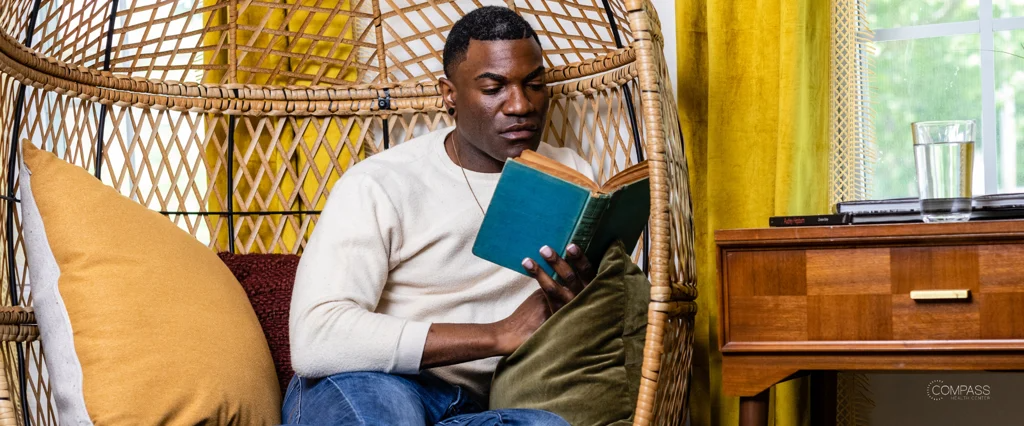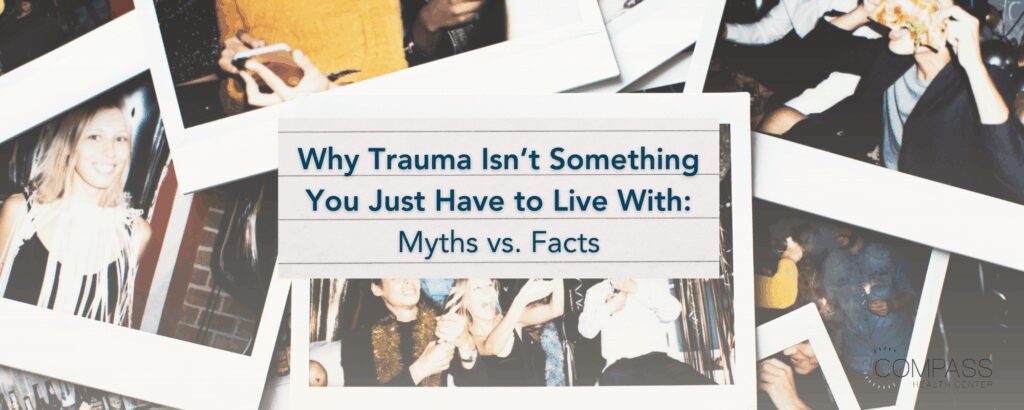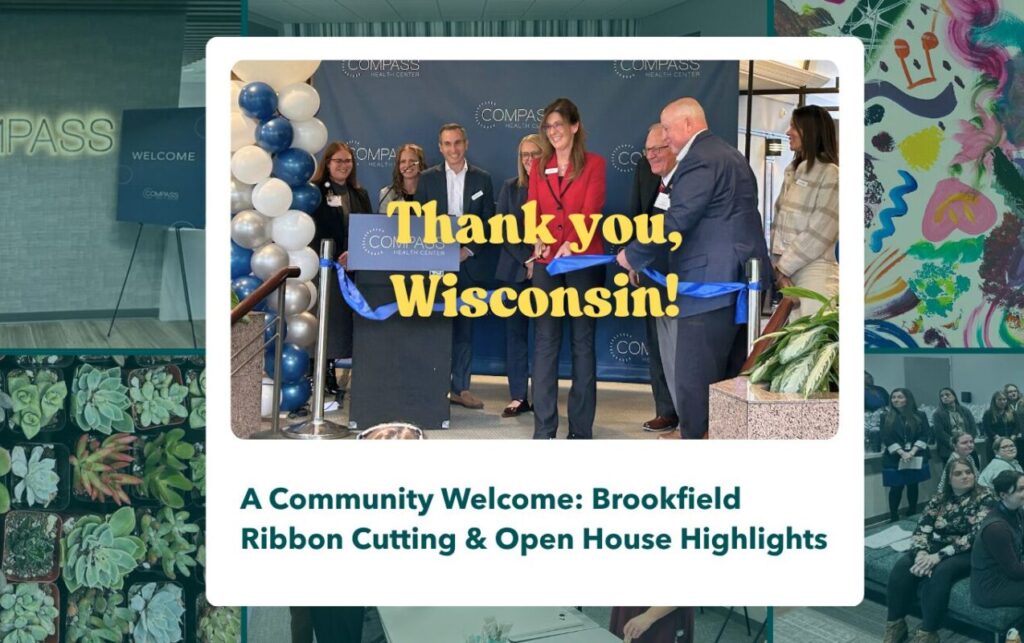
Empowerment: Transforming Helplessness into Purposeful Action and Self-Care
All emotions have a purpose – they are communication devices trying to tell us something. I’d argue that when the emotion of helplessness shows up, it is asking for a fight.
A fight? Mmhmm, a fight.
Helplessness tells us: “You have no options.” “There’s nothing you can do.” “There’s no point in trying.”
Many of us experience these same emotions and thoughts in the face of the ongoing news, tragedy, and suffering throughout the world. I get that.
Your helplessness may be yelling, “Come on, listen to me, I’m telling you there’s nothing you can do.” Sometimes we engage in that fight by believing there’s nothing that can be done. This can lead to further rumination, isolation, and intense fear. However, there is another option. We can shift our focus to what we can change – making a moment-to-moment choice to move in the direction of our values in the face of the threats of helplessness. These choices can look like holding space for ourselves and for others with balance and compassion, among other choices further highlighted in this article.
Often, helplessness removes us from the present moment by making it difficult to take value-aligned action. However, there can be a balance between staying informed, advocating for others, and taking care of your health (mentally, emotionally, and physically). Continue reading to explore the transformative power of acknowledging and addressing helplessness, steering it towards purposeful action and self-care.
From Helplessness to Hopefulness
“You are never strong enough that you don’t need help.” – Cesar Chavez
As the world grapples with ongoing the news, tragedy, and suffering, understanding how to navigate and respond to this emotion becomes crucial. Rather than succumbing to its narrative, there exists an alternative path – turning the mind towards actionable choices aligned with personal values. Striking a balance between staying informed, advocating for others, and maintaining individual well-being forms the foundation of this approach.
Ways to Help Yourself:
- Hold Space for Yourself:
- Cultivate mindfulness by checking in with your thoughts, emotions, and physical sensations. Mindfulness intentionally brings our awareness to the present moment through non-judgment and compassion. Take this moment to check in with yourself: “What am I feeling?” “What thoughts am I experiencing?” “What physical sensations are showing up?” A mindful drop-in may be the first access point in recognizing the tension in our shoulders, the need for an exhale, the intensity of our emotions, the urgency of our thoughts, etc. It is especially important to continuously drop into our internal experiences when we are exposed to excessive media, news, and others’ experiences. While you are scrolling on your phone and find your eyes start to get heavy and your stomach is clenched, gently invite yourself to ask “Where am I at this moment?” to then allow space to ask, “What would be supportive for me?” Acknowledge the impact of excessive media exposure and take mindful pauses to reconnect with the present moment.
- Cultivate mindfulness by checking in with your thoughts, emotions, and physical sensations. Mindfulness intentionally brings our awareness to the present moment through non-judgment and compassion. Take this moment to check in with yourself: “What am I feeling?” “What thoughts am I experiencing?” “What physical sensations are showing up?” A mindful drop-in may be the first access point in recognizing the tension in our shoulders, the need for an exhale, the intensity of our emotions, the urgency of our thoughts, etc. It is especially important to continuously drop into our internal experiences when we are exposed to excessive media, news, and others’ experiences. While you are scrolling on your phone and find your eyes start to get heavy and your stomach is clenched, gently invite yourself to ask “Where am I at this moment?” to then allow space to ask, “What would be supportive for me?” Acknowledge the impact of excessive media exposure and take mindful pauses to reconnect with the present moment.
- De-Fusion Techniques:
- Label your emotions and thoughts to create distance from the intensity of helplessness. We may notice the intensity of our helplessness after checking in with ourselves. It can turn into something with which we start to identify, such as “I am helpless.” “I am powerless.” “I can’t do anything.” Letters to words to language carry immense power. We have the power to separate ourselves from that intensity with de-fusion techniques. One way to de-fuse is to shift from statements like, I am helpless to labeling our emotions and thoughts such as “I am feeling helpless,” “I am experiencing helplessness,” and “I’m having the thought that I can’t make change.”
- Label your emotions and thoughts to create distance from the intensity of helplessness. We may notice the intensity of our helplessness after checking in with ourselves. It can turn into something with which we start to identify, such as “I am helpless.” “I am powerless.” “I can’t do anything.” Letters to words to language carry immense power. We have the power to separate ourselves from that intensity with de-fusion techniques. One way to de-fuse is to shift from statements like, I am helpless to labeling our emotions and thoughts such as “I am feeling helpless,” “I am experiencing helplessness,” and “I’m having the thought that I can’t make change.”
- Rest:
- Most of us have heard the saying “You can’t pour from an empty cup.” It can be difficult to rest amidst worldly unrest and anxious thoughts and feelings about what is going on in the world and in our lives. Maybe you’ve noticed yourself feeling extra tired, having difficulty sleeping, and experiencing guilt for resting amidst ongoing news these past weeks. Allow yourself permission to take a break. This could mean taking a nap, putting your phone on “do not disturb” mode, taking a walk around the block, or even taking a day off. Grant yourself permission to rest amidst global unrest.
- Most of us have heard the saying “You can’t pour from an empty cup.” It can be difficult to rest amidst worldly unrest and anxious thoughts and feelings about what is going on in the world and in our lives. Maybe you’ve noticed yourself feeling extra tired, having difficulty sleeping, and experiencing guilt for resting amidst ongoing news these past weeks. Allow yourself permission to take a break. This could mean taking a nap, putting your phone on “do not disturb” mode, taking a walk around the block, or even taking a day off. Grant yourself permission to rest amidst global unrest.
- Seeking Support:
- It can be difficult sit with the intensity of your emotions alone. It can often feel like you’re the only one who is experiencing these feelings. And yet, that is not the case. If you are feeling anything on the spectrum of grief, loss, fear and sadness, chances are, someone else is too. Connect with others who may be experiencing similar emotions. Identify individuals in your network or explore online communities and local support groups. Ask yourself, “Is there someone at my job who has listened to me before?” “Is there someone that others have gone to and vouched for as person with whom they feel comfortable?” “Do I have a coworker/classmate/friend in whom I can confide?” Search for online communities and local support groups. If you find yourself having thoughts of harm towards yourself or others, reach out for professional support, call a crisis line or 911.
Extending Compassion Beyond Yourself
Maybe your experience of helplessness causes you to feel like there is no way for you to support others around you. There’s an immense power in naming shared feelings of grief, fear, loss, sadness, and despair as well as in finding ways to contribute and give back. We may not have shared experiences with someone who is directly impacted by global events and we are still capable of moving in line with connection, compassion, and community. Ask others how they are really doing. Shared experiences of grief, fear, loss, and sadness can be acknowledged and addressed. Strategies for staying informed involve reading and watching diverse media sources, fostering awareness, education, and active participation in advocacy and community engagement.
Ways to Hold Space for Others:
- Shared Feelings:
- Acknowledge shared emotions and connect with others. Ask about their well-being and openly share resources, support groups, and community events.
- Acknowledge shared emotions and connect with others. Ask about their well-being and openly share resources, support groups, and community events.
- Informed Engagement:
- Read and watch a variety of media to gain diverse perspectives. Engage in awareness, education, and demonstrations to contribute to advocacy, justice, and community building.
Embracing Values Amidst Limitations
“The media’s the most powerful entity on earth.” – Malcolm X
Helplessness can also sound like: “There’s nothing I can do because I don’t know anything about the situation.” “There’s nothing I can do because it’s not my place to say anything.” And yet, we are surrounded by readily available information. It can be overwhelming and eye-opening information. Searching for a range of media (articles, photos, videos, documentaries, etc.) — especially media that is outside of what we have been taught — can support us in moving with the values of knowledge and growth.
Sometimes what we can change is right in front of us. Invite yourself to ask, “what is hard for me to accept in the world right now and what, at this exact moment, is in my power to change within that?” Donations, demonstrations, and contacting elected officials are some ways to move toward the values of advocacy, justice, community, and connection. In doing so, try to be honest with yourself about your time limits and financial restrictions. Change comes in numbers. When it feels like there’s nothing I can do, find the people who are doing. Caveat: the doing can be exhausting which is why checking in with ourselves is of most importance. Vicarious trauma, or secondary trauma, entails indirect exposure to traumatic events (including news coverage and media about traumatic events).
Navigating helplessness involves recognizing the limits of individual power while still honoring the potency within those constraints. Advocacy, justice, community, and connection can coexist with the need for rest, health, independence, and self-acceptance. By acknowledging the multifaceted nature of one’s power and the simultaneous existence of vulnerability, individuals can respond to helplessness with resilience and purpose.
Ways to Protect Your Principles:
- Holistic Advocacy:
- Embrace a holistic approach, recognizing that advocating for issues of social importance can coexist with personal well-being. This interconnected perspective enhances the impact of individual efforts.
- Embrace a holistic approach, recognizing that advocating for issues of social importance can coexist with personal well-being. This interconnected perspective enhances the impact of individual efforts.
- Balanced Prioritization and Demonstration:
- Navigate limitations by adopting a balanced approach to prioritize well-being alongside societal contributions. Recognize that addressing personal needs contributes to a more resilient and effective response to challenges.
- Resilient Self-Awareness:
- Develop resilient self-awareness by acknowledging the multifaceted nature of personal power. Recognize that vulnerability coexists with strength, enabling a purposeful response to helplessness while leveraging available strengths.
Acknowledging Helplessness as a Call to Conscious Action
“I am no longer accepting the things I cannot change. I am changing the things I cannot accept.” – Angela Davis
The shift from helplessness to purposeful action involves a balance between individual well-being, community engagement, and a mindful approach to navigating the complexities of the modern world. By acknowledging helplessness as a call to conscious action, individuals can play a transformative role in their lives and the lives of those around them.
At any moment, we have an opportunity to check in with our values that can be help true at the same time – advocacy and rest, justice and health, community and independence, growth and self-acceptance. When helplessness bluntly states, “You have limited power,” you can reply, “My power has its limits and it is still power.”

Further Reading:
- How to Ask for Mental Health Help https://blog.compasshealthcenter.net/how-to-ask-for-mental-health-help
- Addressing Secondhand Trauma from Television and Social Media: A Clinician’s Guide to Meaningful Conversations with Youth https://blog.compasshealthcenter.net/a-clinicians-guide-to-meaningful-conversations-with-youth
- How Do I Know Which Type of Mental Health Treatment is Right for Me? | A Clinician’s Guide to Understanding Levels of Care https://blog.compasshealthcenter.net/how-do-i-know-which-type-of-mental-health-treatment-is-right-for-me
- Three Ways to Identify Emotions to Help Navigate Your Feelings | A Clinician’s Guide for Improved Mental Health https://blog.compasshealthcenter.net/three-ways-to-identify-emotions-to-help-navigate-your-feelings


